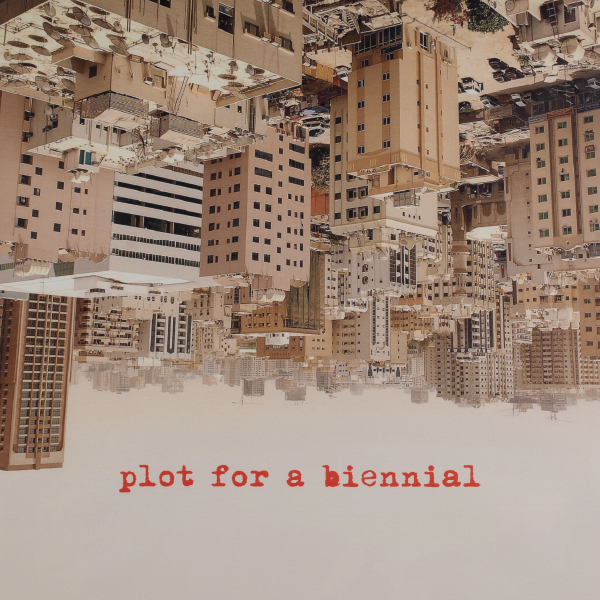

The curatorial framework for the 10th edition of the Sharjah Biennial, titled Plot for a Biennial draws on the idea of a treatment for film, replete with a plot, characters and motives. It is woven from a constellation of key words and themes that include Treason, Necessity, Insurrection, Affiliation, Corruption, Devotion, Disclosure and Translation.
Within this conceptual and lexical framework, artists, filmmakers, musicians, writers and performers constitute a cast of protagonists that include The Traitor, The Collaborator, The Experientialist and The Traducer. We propose Plot for a Biennial as a platform for multiple conversations with a distinctly worldly perspective yet thoroughly engaged with the city of Sharjah, its past and present, and its political economy centred on trade and translation.
Artists' contributions come to life in a variety of forms and encounters, encompassing painting, sculpture, drawing, photography, etching, cartography, film, performances, publications and lectures. Seminal works by established figures are presented in relation to contemporary artists from over thirty countries across a host of sites and spaces, from the Arts and Heritage areas to the Institute for Theatrical Arts, Hamra Cinema and the Sharjah Cricket Stadium.
Suzanne Cotter, Rasha Salti and Haig Aivazian
Red organic forms highlighted with strokes of white paint gently swarm across the courtyard of Beit Al Serkal.

Imran Qureshi
2011
Curated by Suzanne Cotter and Rasha Salti with Associate Curator Haig Aivazian, the Biennial presented a new and specially commissioned works by contemporary artists, filmmakers, writers and performers from across the region and internationally.
Image: Omar Rajeh, Mushrooms and Fig Leaves, 2011. Dance performance, installation, Performance still.
Commissioned by Sharjah Art Foundation.
Photo by Alfredo Rubio.
Developing on the geographic reach and the focus on new production of previous Biennials, Plot for a Biennial merged what have traditionally been parallel formats of exhibition, film and performance into a multivalent sequence of encounters that extend from the Sharjah Art Museum to Sharjah’s historic Heritage Area and sites around the city.
The Biennial included the work of more than 90 artists, filmmakers, choreographers, writers, publishers and musicians, working individually and collaboratively, from Afghanistan, Algeria, Belgium, Canada, Egypt, England France, Germany, Iran, Ireland, India, Kazakhstan, Morocco, Palestine, Lebanon, Pakistan, Poland, Syria, Thailand, the United Arab Emirates and the US.
Plot for a Biennial takes as its curatorial narrative the idea of a treatment for film, ‘scripted’ around a constellation of keywords that include Treason, Necessity, Insurrection, Affiliation, Corruption, Devotion, Disclosure, Translation. These terms operate as motifs and serve to frame explorations in both subject matter and aesthetic positions.
Among the central themes is the assertion of individual subjectivity within the realms of culture, religion and statehood. Equally central are questions around the aesthetics of art as seduction and formal dissidence, and the production and communicability of art as both dubious and potentially transformative. Located within a web of etymological tracings, the concept of treason, a word that shares its Latin roots with trade and translation, provides multiple registers of interpretation, from betrayal to trade and translation, the latter being activities central to the economy, history and culture of Sharjah.
Within this lexical framework, artists, filmmakers, performers and writers constitute a cast of players, often assuming multiple roles, which encompass The Traitor, The Traducer, The Collaborator and The Experientialist. Proposing the Biennial as a script to be followed or improvised also allows for new narratives and thematic chapters to emerge.
In borrowing the structure of a film narrative, the Biennial is intended to function as a series of chapters, or reels, that unravel or are refashioned by visitors at different moments and over the course of the plot’s unfolding. In its visual, spatial and temporal dimensions that play on proximity, duration and correspondences, Plot for a Biennial attempts to reflect the hybrid nature of contemporary artistic practice, and the singularity of artistic positions as part of an intersecting and overlapping spectrum of concerns and consequences in our present time.
The Sharjah Biennial 10 Prize was awarded to Trisha Donnelly, Imran Qureshi, Rania Stephan, Rayyane Tabet and Jalal Toufic by a jury comprised of Klaus Biesenbach, Director of MoMA PS1, New York; Christine Tohme, Director of Ashkal Alwan, Beirut; and Boris Groys, art critic, media theorist and Andrew Mellon Professor at the Courtauld Art Institute, London.